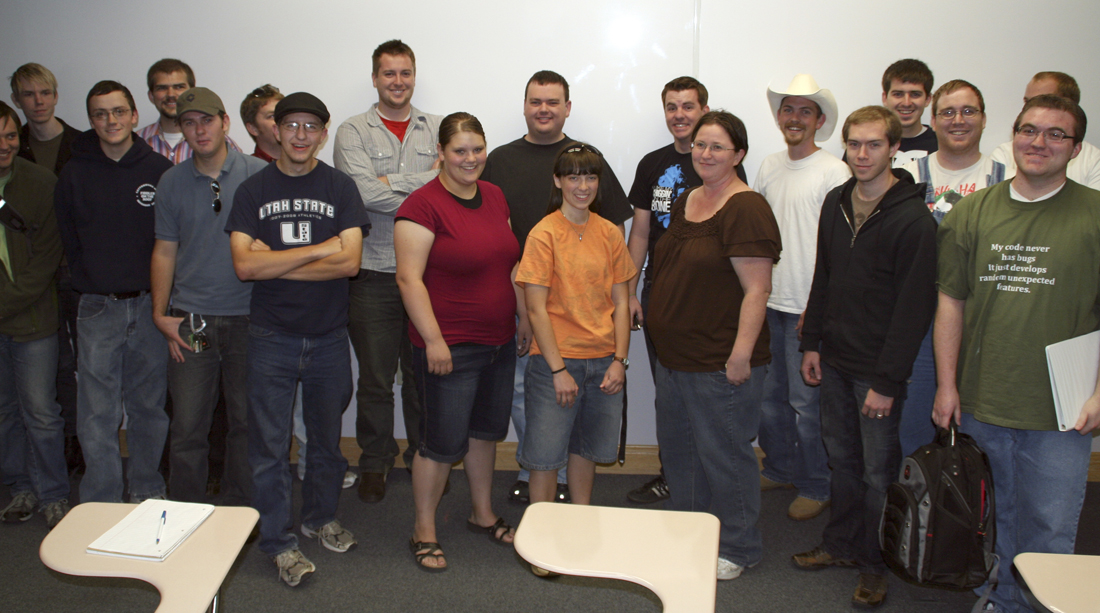Women successful in male-dominated fields
A young boy was severely injured and rushed to the hospital by his father. After the initial examination, the doctor returned to the room and said, “I can not operate on this child. I am his parent.” Who was the child’s doctor?
Ann Austin, the director of the Center for Women and Gender Studies and professor of child development, said this story would have “stumped” most people a couple of decades ago. Though times and policies have changed, stereotypes still appear to define some fields. Women still fill 92 percent of nursing positions, 83 percent of receptionist positions and 81 percent of elementary and junior high teachers, according to the website for the U.S. Department of Labor. The website also stated that women earn 20 percent less than men on average.
For the past 20 or 30 years, regulations have been created to help equalize the workplace. One such policy is affirmative action. The policy was incorporated into an executive order in 1961 by President John F. Kennedy and has been revised several times. The American Association for Affirmative Action (AAAA) states on their website that affirmative action refers to “positive steps aimed at increasing the inclusion of historically excluded groups in employment, education and business.”
Today, one function of affirmative action is to regulate what percentage of a work force must be a minority, sometimes including women. Austin said she is “deeply grateful” for affirmative action, which gave her an equal wage, though remembers the “angst” her sons went through when they were turned down for jobs because of the policy.
While affirmative action has made strides to level the playing field for minorities, some feel it has created disadvantage for the majority. An anonymous source, who is working on his graduate degree in aerospace engineering, said this policy could make the hiring for some unequal in the engineering field. He explained that a company may have a goal to hire five men and five women, but are likely to get most of their applications from men and may not even see five female applicants.
“The result is often that each of these women is given a job with little consideration, while the men are tediously interviewed and chosen very carefully. Sounds like prejudice to me,” he said.
Even at USU, certain colleges and departments are statistically dominated by men. One is the College of Engineering. While no one can answer the question of the unequal student body fully, Chris Hailey, associate dean for the college, said part of the problem is the lack of engineering exposure for girls in elementary and junior high schools. Hailey also said some blame falls on those within the field.
“We’ve not told our story well enough to be compelling to women,” she said.
Dean of Engineering H. Scott Hinton agreed that a discrepancy in education accounts for the low percentages of women. It has nothing to do with the curriculum, he said. Both Hailey and Hinton said the women that do enter into the major do well and really become engaged.
“A lot of them are bubbling to the top,” Hinton said, “a sign they’re being accepted but also a sign of confidence to reach their full potential. They’re going to go out and make tremendous leaders.”
Hailey and Hinton said they haven’t seen a bias in the classrooms, despite the social dichotomy. Christine Koloveas is studying mechanical engineering, the least female-populated emphasis within the college. She said getting special treatment is her “pet peeve” and prefers people to remain unbiased.
“When it comes down to it, you try your best and see what happens,” she said.
Koloveas said some girls might leave the major because they are too hard on themselves, admitting to almost dropping the major herself after failing a class.
“I think women feel like they failed when all the guys are doing awesome,” she said. “I’m sure there are other guys failing classes.”
Hinton said one of the main goals of the college is to create an atmosphere of acceptance and make sure the girls have a support group.
“Engineering is hard,” he said, “and if you’re alone it makes it harder.”
Hailey said the college is always looking for ways to include more women in the program. The college would love to have more women interested, she said, especially when engineers are so needed.
“Whether it’s a heart defibrillator or some sort of insulin pump or a satellite in space, engineers are everywhere,” she said.
Vicki Allan, an associate professor in the computer science department, echoed Hailey’s and Hinton’s statements and said another big deterrent for women in her field is how it is perceived. The head of the department, Donald Cooley, said the same stereotype surrounding computer scientists probably holds true for engineers as well.
“Computer scientists have been portrayed, more often than not, as geeks and nerds,” he said. “I think many women, because of that image, don’t go into the field.”
Cooley also confirmed that ability does not vary based on sex.
“One thing I make very clear,” he said, ” women do as well as men in computer science. There is no issue with aptitude.”
Allan agreed that women hold their own in this area of study, sometimes even excelling past the men.
“The women who aren’t doing so well eliminate themselves and the men don’t,” she said. “The women who stay with it are probably on average better than the men.”
Cooley said the biggest disappointment is that “women, just because of stereotype, they don’t look into the field and could miss out on a career that could be very proactive.”
– k.vandyke@aggiemail.usu.edu

